Adopting a warehouse management system (WMS) is a sure-fire way to streamline warehouse operations. It brings together your inbound and outbound warehouse processes in the most efficient way to save you time and money.
Benefits of Implementing a WMS
A WMS can be a game changer for your ecommerce warehousing supply chain. The right system can transform the ins and outs of your warehouse, from inventory control to your transportation management systems.

WMSs can help your team work smarter and boost your fulfillment processes. This means you save money and fulfill more orders.
While WMS deployment models can vary, here’s what’s key to look out for when you’re scouting the best WMS for your business.

Inventory Management
Your warehouse is only as good as its goods. You need to know how much and where your inventory is to be most efficient. Inventory control helps you:
- monitor your products
- improve how your warehouse does inventory processing.
It removes the need for a physical inventory count, automating it. In the fast-moving consumer goods game, this is non-negotiable.
To keep track of your goods, barcode scanning uses:
- serial number tracking
- storage, and
- a classification system.
Compatibility with a radio frequency identification (RFID) system is an extra advantage. With this, you can go wireless with your tagging system, feeding data directly into your WMS platform. Many WMS platforms also use mobile devices. This makes keeping track of inventory user-friendly and simple.
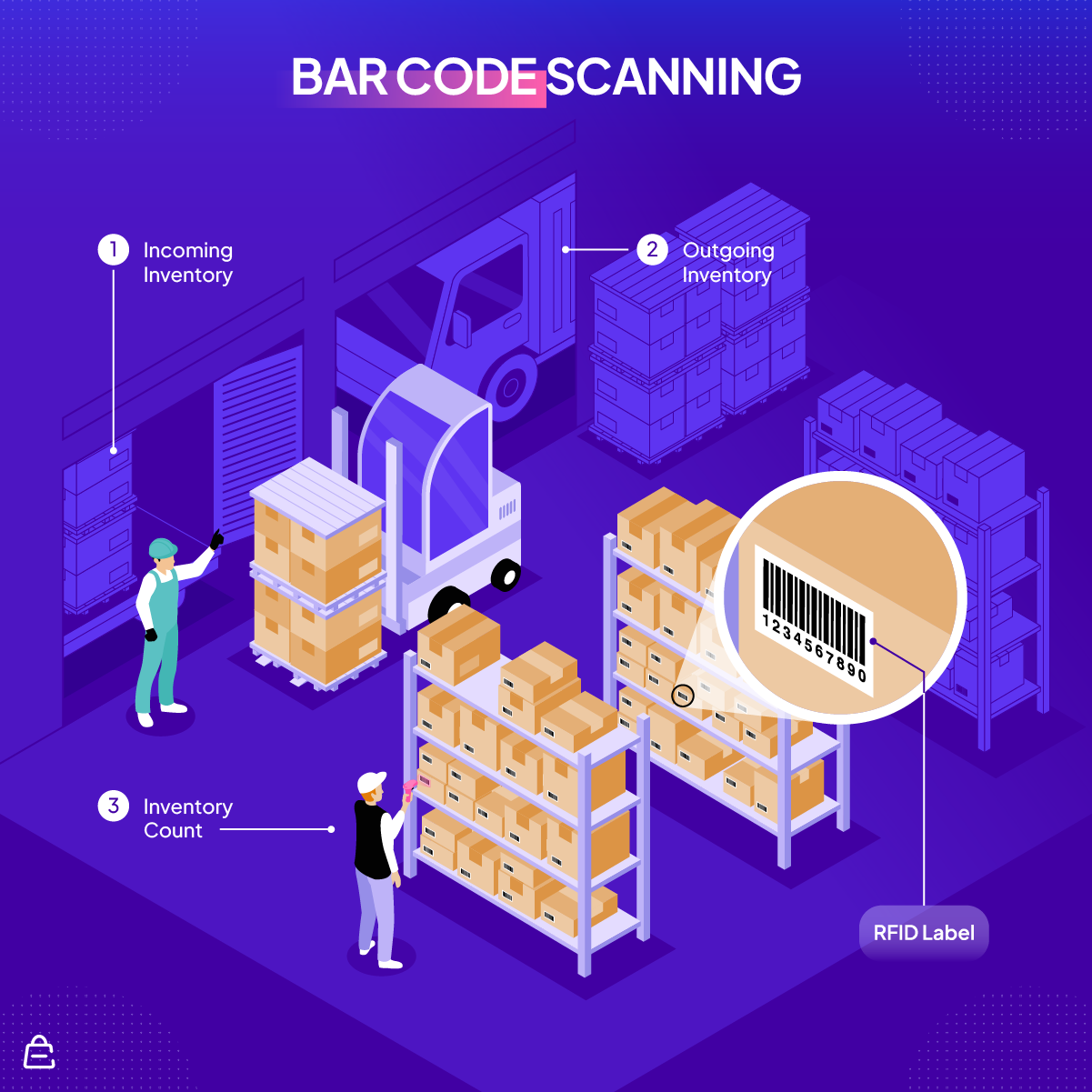
Get rid of physical inventory counts with automated cycle counting. Regular counting means you know the inventory levels in specific bins. You can bank on what is where. You’ll also:
- reduce human errors
- fool-proof your inventory management.
Cross-docking features allow you to escape unnecessary warehouse storage. This happens by directly unloading and reloading goods from inbound and outbound delivery trucks. To do this, you need inventory tracking software.
More features of inventory management include:
- inventory reordering
- de-kitting or kitting
- rules engine
- slotting techniques
- task interleaving or internal movements
- inventory aging report
- hazardous goods management
- software on-cloud basis.
Warehouse Automation
Warehouse management system capabilities automate storage and retrieval. This absolutely reduces manual tasks. Meaning? Your warehouse can meet the demands of your customers faster. By melding robotics, artificial intelligence (AI) or machine learning, you can further:
- reduce human mistakes
- decrease potential labor risks.
Robots can take on maintenance and inspection tasks. This frees up your warehouse staff to be more efficient in human-centric jobs.
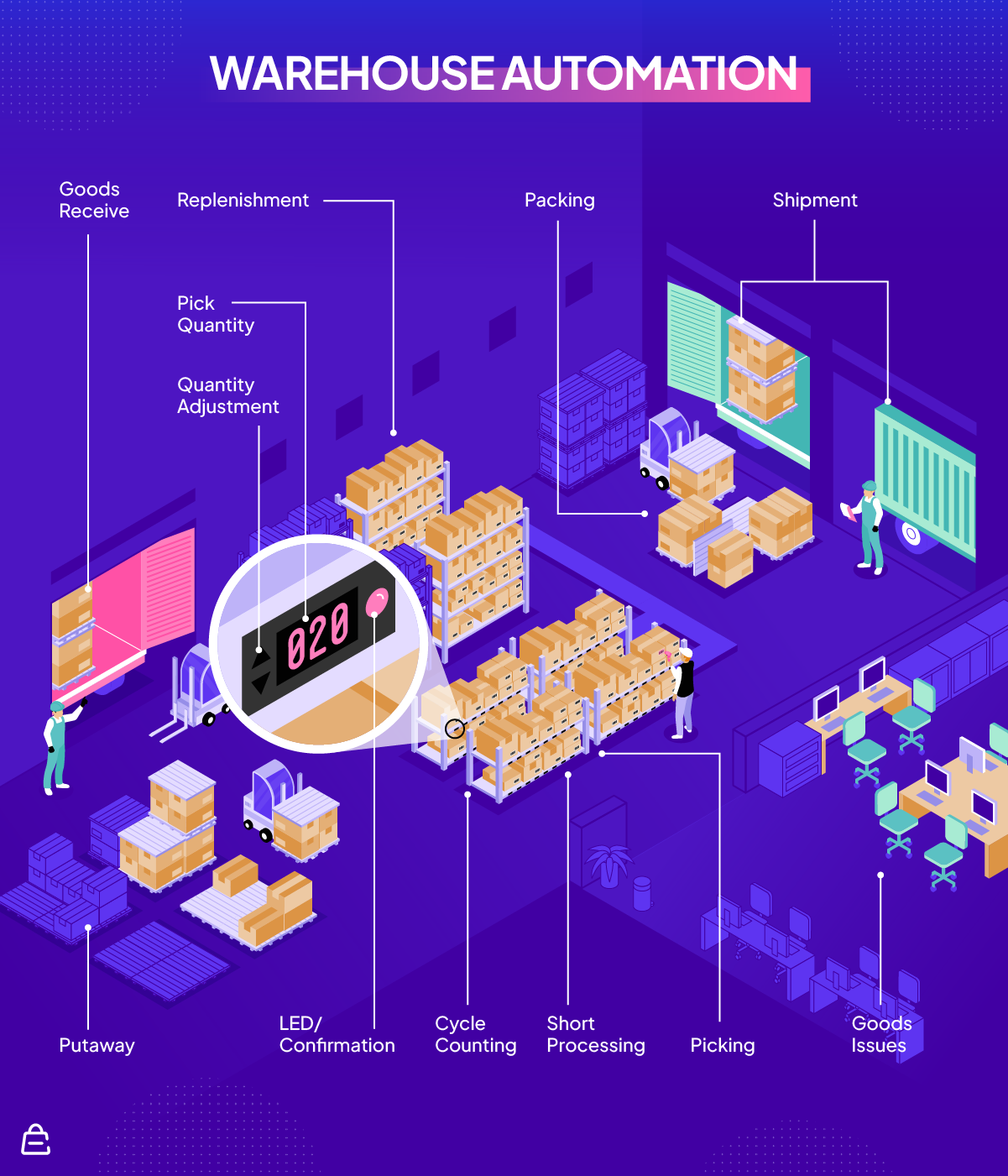
Warehouse simulation maps out inventory location suggestions to make the most efficient use of space.
More automated processes include:
- pick-to-light
- multi-location management
- warehouse layout planning.
Order and Billing Administration
Organized invoicing is crucial warehouse management system functionality. This quickly lets you see how your business sales are tracking. It provides accurate information and summaries at a glance. You know what’s going on with your bottom line.
These types of features help you easily see:
- order history
- wholesale orders
- multichannel orders.
Automating your order and invoice management could fire up this area of your business with:
- auto purchasing decreasing manual tasks
- cost reconciliation optimizing your approvals process
- purchase order rules streamlining manual data entry.
Order lifecycle management digitizes the end-to-end order fulfillment process. It provides better visibility to customers of their order. Want to streamline the customer experience further? Sync up your customer relationship management system, payment solution providers, and 3PLs. Happy customers equal loyal customers.
Other essential features include:
- activity-based billing
- reordering cost rules
- vendor management
- snapshot management.
Cartonization
This is a fancy way of saying your WMS will find the most efficient way to pack and ship items. This feature assesses item measurements, including size and weight, to understand the best way to pack up and ship out. It can streamline your warehouse’s flow of products.
Optimized container loading means you can combine multiple shipments to move goods in a more cost-effective way. Read, fewer vehicles and containers to move goods. Fewer costs for your business.
Cartonization can lower labor costs and improve employee productivity. As part of the packing process, an optimized packing workbench allows warehouse workers to pack efficiently. This can decrease potential returns and damaged goods through the right packaging.
Cartonization features can solve:
- single level cartonization
- multi-level cartonization
- container splitting
- container management.
Integrations
Warehouse management system integration ensures other systems talk to one another. This creates more seamless:
- processes
- workflow
- productivity.
Building enterprise-level operations or more complex logistics? Integration with enterprise resource planning (ERP) and other software is key.
ERP customization can offer:
- 3PL support
- major carrier integration
- ecommerce platform integration.
Labor Management
It’s a tight labor market and supply chain professionals are in demand.
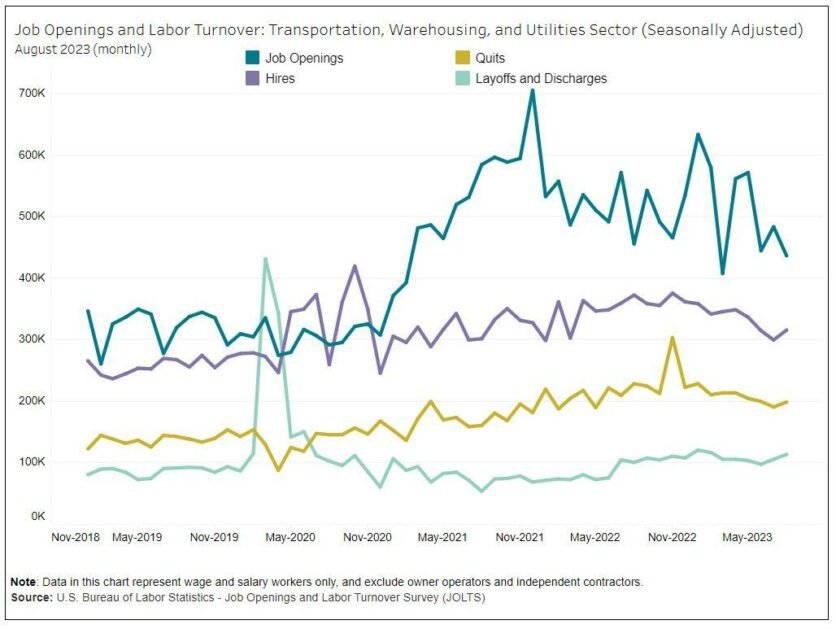
Warehouse managers use software to perfect team working conditions. This includes:
- labor planning and scheduling
- labor allocation
- scheduling of personnel shifts
- managing working hours.
Being able to interpret and act on labor data leads to:
- enhanced labor management
- better business decisions.
When employees are managed respectfully and feel fulfilled, employee engagement soars. In turn, the business will hit productivity breakthroughs with happy workers.
Use labor data to distribute your workforce to their most efficient tasks or zones. That’s data-driven, labor cost optimization. It can transform your bottom line.
Other features include:
- warehouse safety control
- certificates management.
Order Picking
Pick and pack is an essential function of any warehouse process. Order picking efficiency is up there in warehousing functions. Why? Because it can save you time and churn out orders faster. Scale order picking by using advanced WMS capabilities.
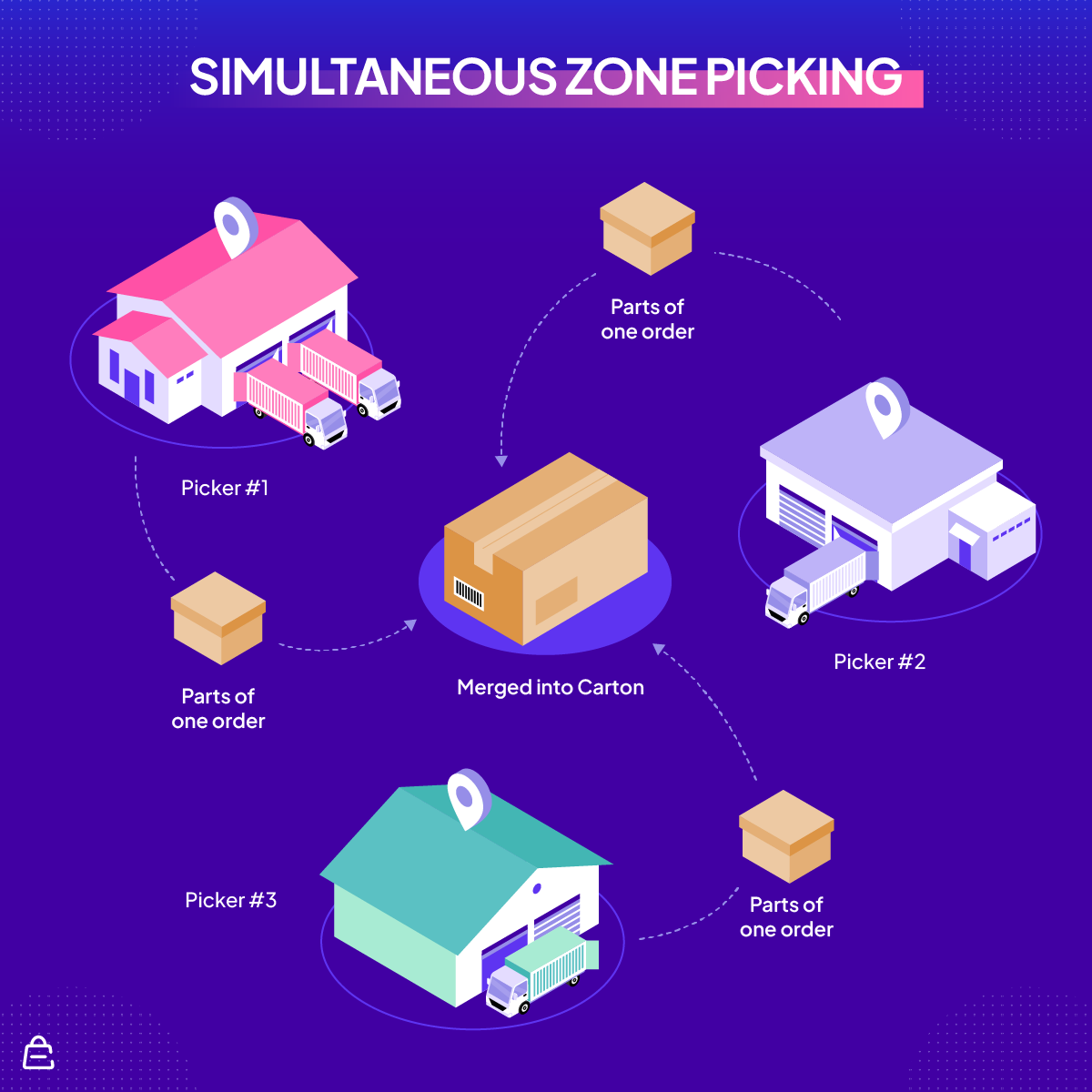
Batch and cluster picking increases speed and accuracy by picking inventory for multiple customer orders at once. This limits repeated trips to the same zone for different orders.
Directed voice picking is hands-free and paper-free. This allows employees to focus on the task at hand by following voice prompts to pick.
Streamline warehouse picking with:
- vision picking
- zone picking
- wave picking
- partial picking.
Shipping
The best warehouse management systems ensure correct, on-time order deliveries across warehouses through powered-up shipping. They do this by making sure goods check-in is streamlined and packing and dispatch is a breeze.
Warehouse management software shipping features can be so much more than just printing shipping labels. These WMS functions enhance the customer experience by getting products delivered on time.
Other shipping features include:
- optimizing goods arrival
- freight procurement
- cold chain management
- digital assistants
- IoT fleet monitoring
- default carriers and services.
Yard Management and Receiving
Good yard management is more than just receiving. It also includes:
- inventory updates and visibility
- receipt and putaway
- putaway rules
- system directed putaway
- putaway zone list.
Or how about getting your bins sorted by setting bin search rules for bin selection? That’s all part of resourceful yard operations and receiving.
Full yard visibility and tracking means you can move more products in and out. This means more sales, shipments, deliveries, and fulfillments.
Other features allow appointment scheduling for dock management. This could include gate check-in/check-out and advanced shipment notifications (ASN). ASN is an electronic record that supplies details about shipment.
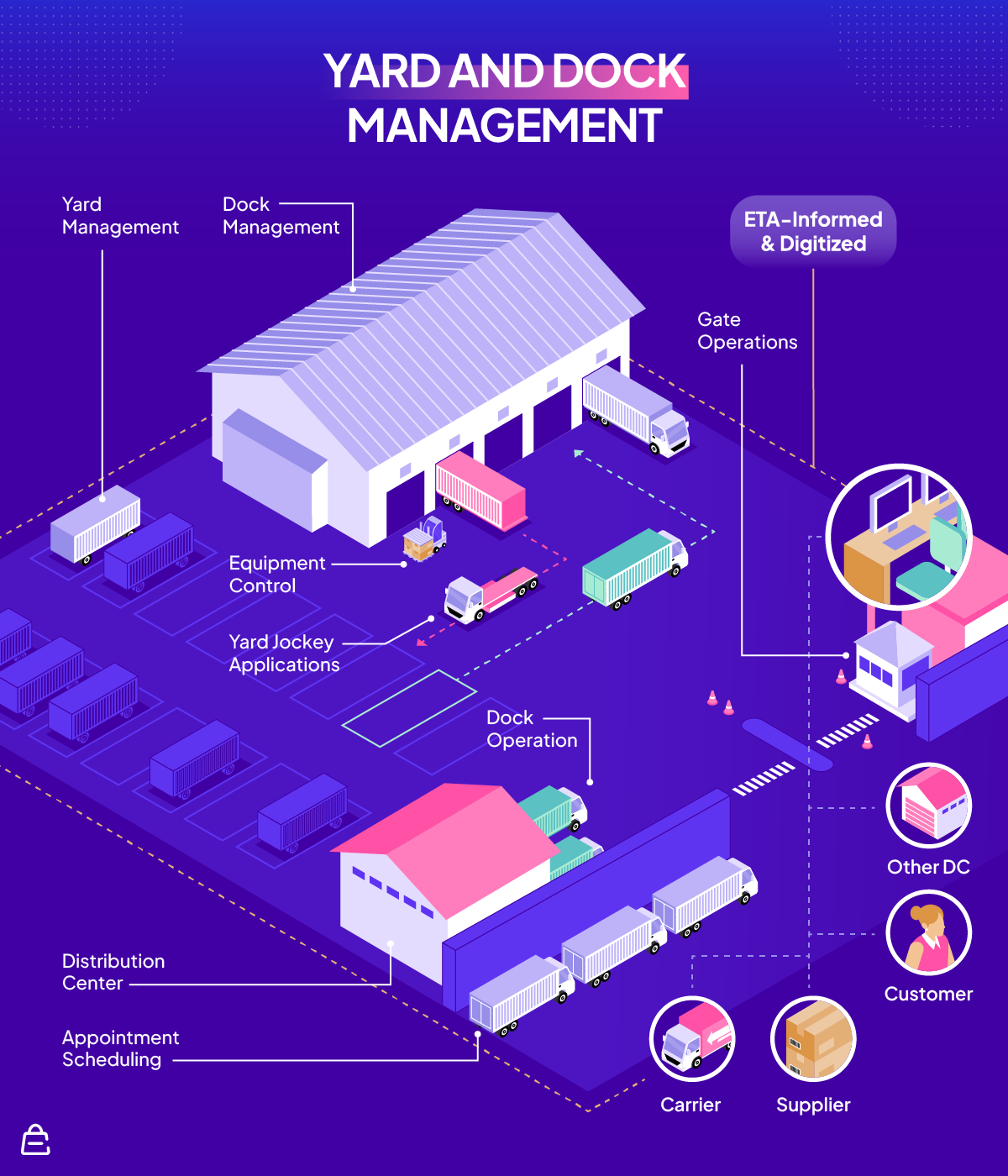
Returns Management
Returns processing is key in this click, order, receive, return world. Returns management is the reverse process to how your goods ship out. During this process, quality checking of returned goods is essential when checking and restocking your warehouse.
This feature improves your returned products management with:
- check-in and sorting
- efficient restocking
- prompt processing of refunds or exchanges.
On the customer side, it:
- supplies clear instructions on how to return items
- records and confirms return requests
- generates return authorizations.
Return status tracking in real time allows warehouse employees and customers to track the progress of returns.
Reports and Analytics
More data more deliveries! WMS software enables you to make data-driven decisions through its collection of:
- inventory analytics
- performance metrics
- procurement analytics
- replenishment planning analytics.
Understand more about your inventory with discrepancy reports and consignment reports.
Get familiar with the real numbers that make up the total landed cost of a product once it reaches a customer’s doorstep. These include:
- shipping costs
- customs and import duties
- insurance and compliance costs
- handing and payment processing fees.
Once you crunch the numbers, you can see where to trim costs.
You’ll have the ability to improve forecasting with:
- customized information
- advanced analytics, and
- interactive dashboards.
You can use these features to charge up your workforce, using key performance indicator (KPI) management. Setting achievable KPIs helps motivate your workforce to be and work better.
View expected delivery dates with features supplying real-time data streaming. Once you have the knowledge, you can fix improvement areas across your entire warehouse.
Organizational Strategies for Improved Warehouse Operations
Key warehouse management system features should improve your warehouse:
- operations
- logistics
- overall supply chain management.
They do this by getting your warehouse organized or shaping up areas that need to be more efficient. When you’re organized, you can pick, pack, and fulfill orders faster and more accurately. These efficiencies lead to a better end-to-end customer experience, enhancing customer loyalty and brand reputation.
The Need to Minimize Manual Data Entry
Did you know, according to Wasp Barcode Technologies’ State of Small Business Report, 43% of small to medium-sized businesses either:
- use a manual method to track inventory
- do not do any tracking whatsoever?
By automating any manual processes and data entry, you gain a competitive advantage over more than half the field.
Automating data entry also saves time and reduces errors. Look for warehouse management system features that help your business do just this. Then, you can divert your valuable resources to other important tasks. Add inventory management software for a slam dunk.
Prioritizing Safety within the Warehouse
Focus on WMS features that boost picking and packing efficiencies and keep workers healthy, happy, and efficient.
When a warehouse is safe, the processes and employees become more efficient. This, in turn, can also support employee retention. A safe workplace is:
- functional
- well organized
- attractive to employees.
Fewer mishaps translate to less money spent on fixups, and no wasted costs on workers’ compensation claims or replacement equipment.
Is a Warehouse Management System Right for You?
According to G2’s Warehouse Automation Statistics, by 2024, 84% of businesses will be using modern WMSs for labor planning and management.
Are you ready to jump in? What are your warehouse management system requirements?
You might be considering moving from using fulfillment services and thinking about how it compares to warehousing. If you’ve been outsourcing your third-party logistics, there are a lot of warehouse considerations when bringing it all in-house. While there may be more line items to consider, you’ll have more control to set up, manage, and execute the warehouse process and distribution from start to finish.
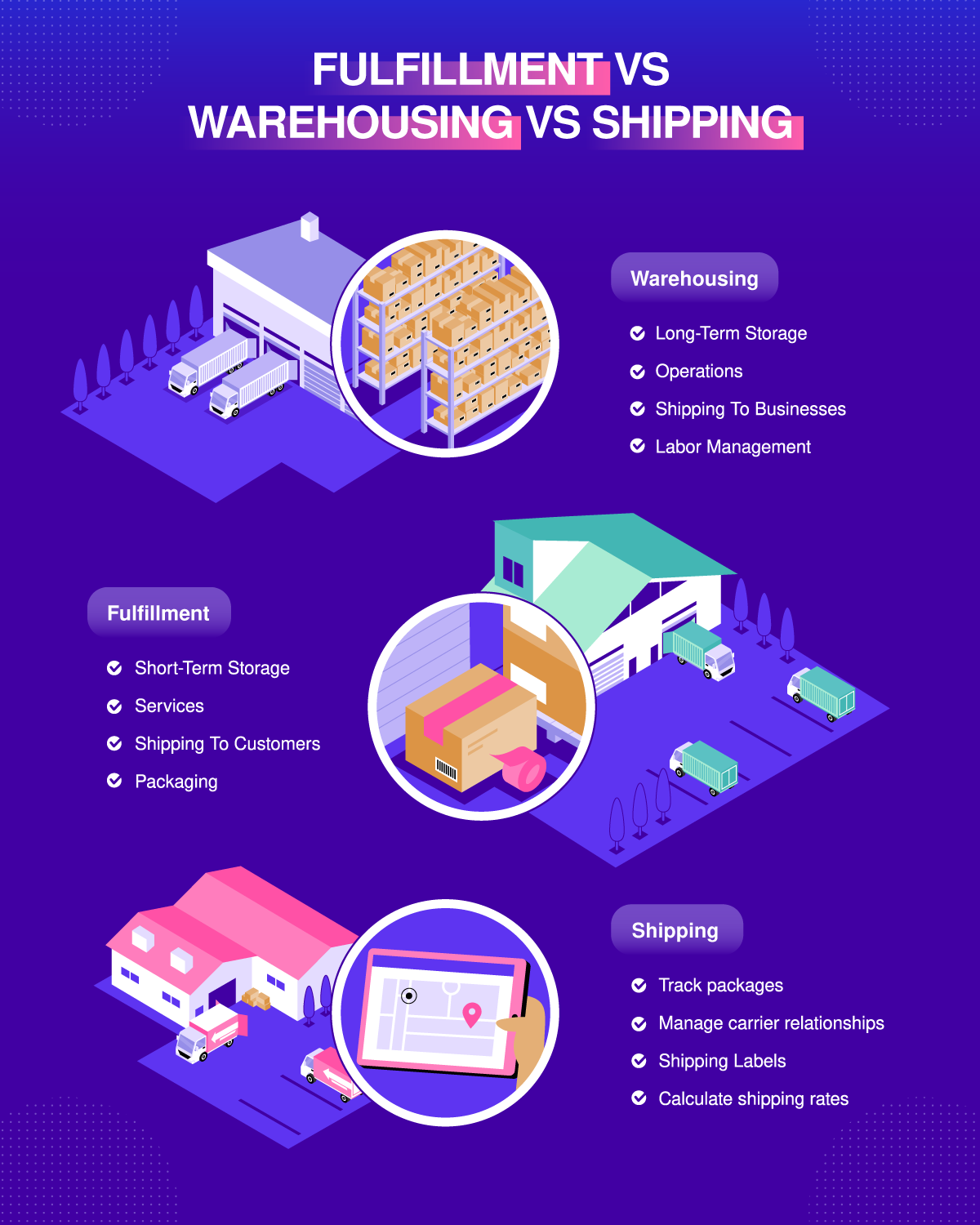
A basic warehouse management system might be all you need to automate and streamline essential warehouse areas. As required, you might then add WMS modules to the initial framework to kick-start your ecommerce business into high gear.
As you scale and your business grows, increased trading volumes might require more advanced warehouse management systems. A modern WMS offers a range of options to centralize tasks, advanced internet of things (IoT) technology, and strategies to optimize every aspect of warehouse management.
Your WMS functionality checklist should include features that focus on:
- inventory and quality control
- automation of manual tasks
- easy handling of orders and billing systems
- the shipping and packing process
- any necessary system merging
- optimizing your workforce
- helpful reports and advanced analytics
- getting vehicles in and out of your docks quickly.
The right warehouse management system should help:
- streamline workflow and products
- standardize quality
- provide real-time inventory visibility
- decrease human error
- increase cash flow through optimizing inventory movements
- provide enhanced business intelligence with advanced analytics and reports
- ship items on time.
Time is money, and money is time. Running your own business can be a real hustle. Don’t let all your hard work just vaporize. A WMS is a proven way to help you achieve more out of your supply chain.
Want to know more about which WMS provider is best for you? Check out our round up review of the 10 best warehouse management software ranked for 2023.









